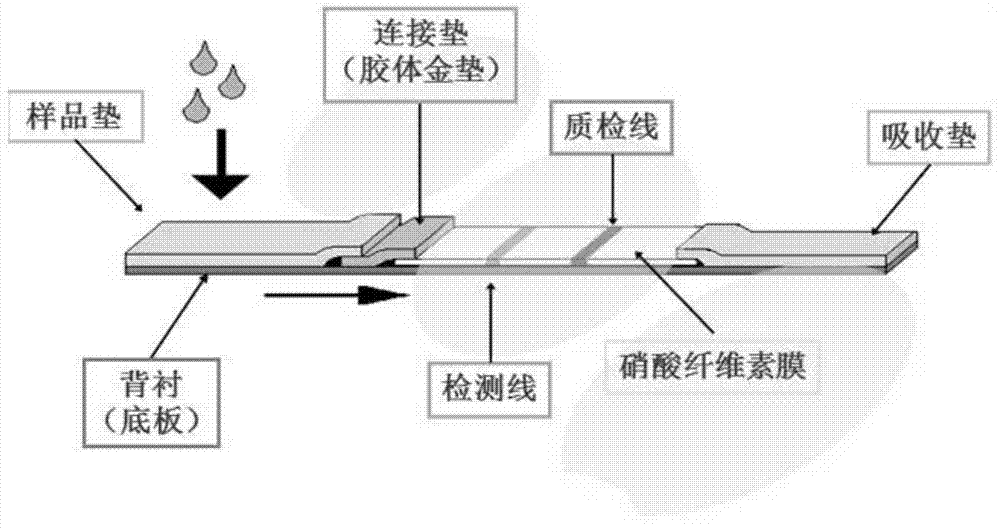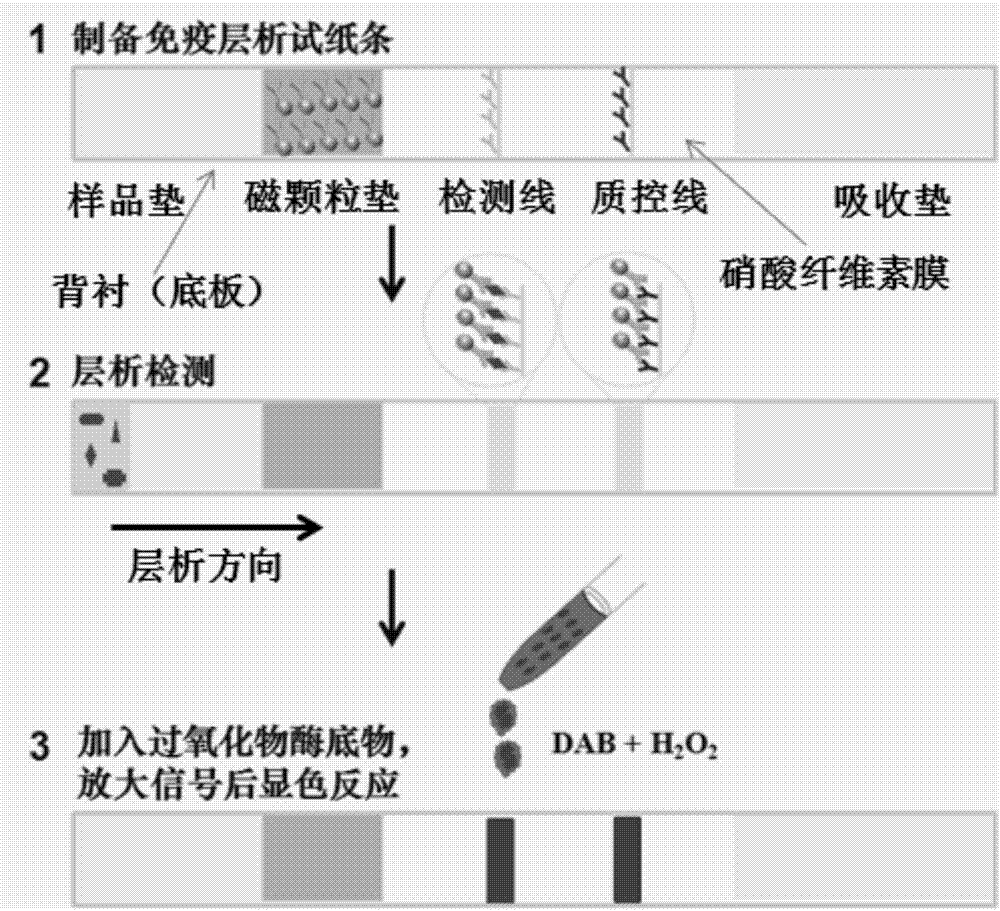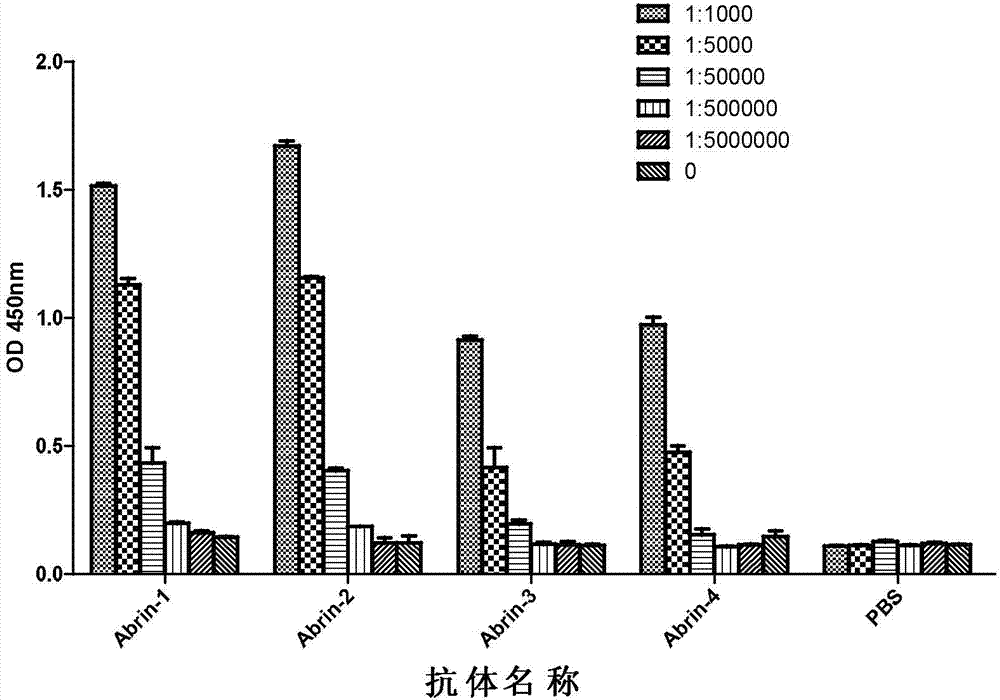Nanometer mimic enzyme immunochromatography detection method
An immunochromatographic detection and enzyme-simulating technology, applied in the fields of nanomaterials and biomedical nanometers, can solve the problems of high price and restricting the development and promotion of magnetic immunochromatography
- Summary
- Abstract
- Description
- Claims
- Application Information
AI Technical Summary
Problems solved by technology
Method used
Image
Examples
Embodiment
[0052] Example: Detection of abrin toxin by nano-mimetic enzyme immunochromatography detection method
[0053] 1) Preparation of hybridoma cells
[0054] Acacia toxin is an ingredient in the seeds of the leguminous plant Acacia acacia. It is one of the most toxic plant toxins found so far. It is very toxic to humans, animals and insects. Chewing a piece of Acacia acacia seed is enough As a result, the present invention uses the detection of abrin toxin (abbrin toxin and ricin toxin mentioned below are provided by the Academy of Military Medical Sciences) as an example to illustrate the sensitivity and practicability of the nano-mimetic enzyme immunochromatographic detection method. The monoclonal antibodies Abrin-1, Abrin-2, Abrin-3, and Abrin-4 against abrin-toxin used in the experiment were derived from the secretory monoclonal antibodies Abrin-1, Abrin-2, Abrin-3, and Abrin-4, respectively. Hybridoma cells (methods for the production of monoclonal antibodies are known in t...
PUM
| Property | Measurement | Unit |
|---|---|---|
| particle diameter | aaaaa | aaaaa |
Abstract
Description
Claims
Application Information
 Login to View More
Login to View More - R&D
- Intellectual Property
- Life Sciences
- Materials
- Tech Scout
- Unparalleled Data Quality
- Higher Quality Content
- 60% Fewer Hallucinations
Browse by: Latest US Patents, China's latest patents, Technical Efficacy Thesaurus, Application Domain, Technology Topic, Popular Technical Reports.
© 2025 PatSnap. All rights reserved.Legal|Privacy policy|Modern Slavery Act Transparency Statement|Sitemap|About US| Contact US: help@patsnap.com



